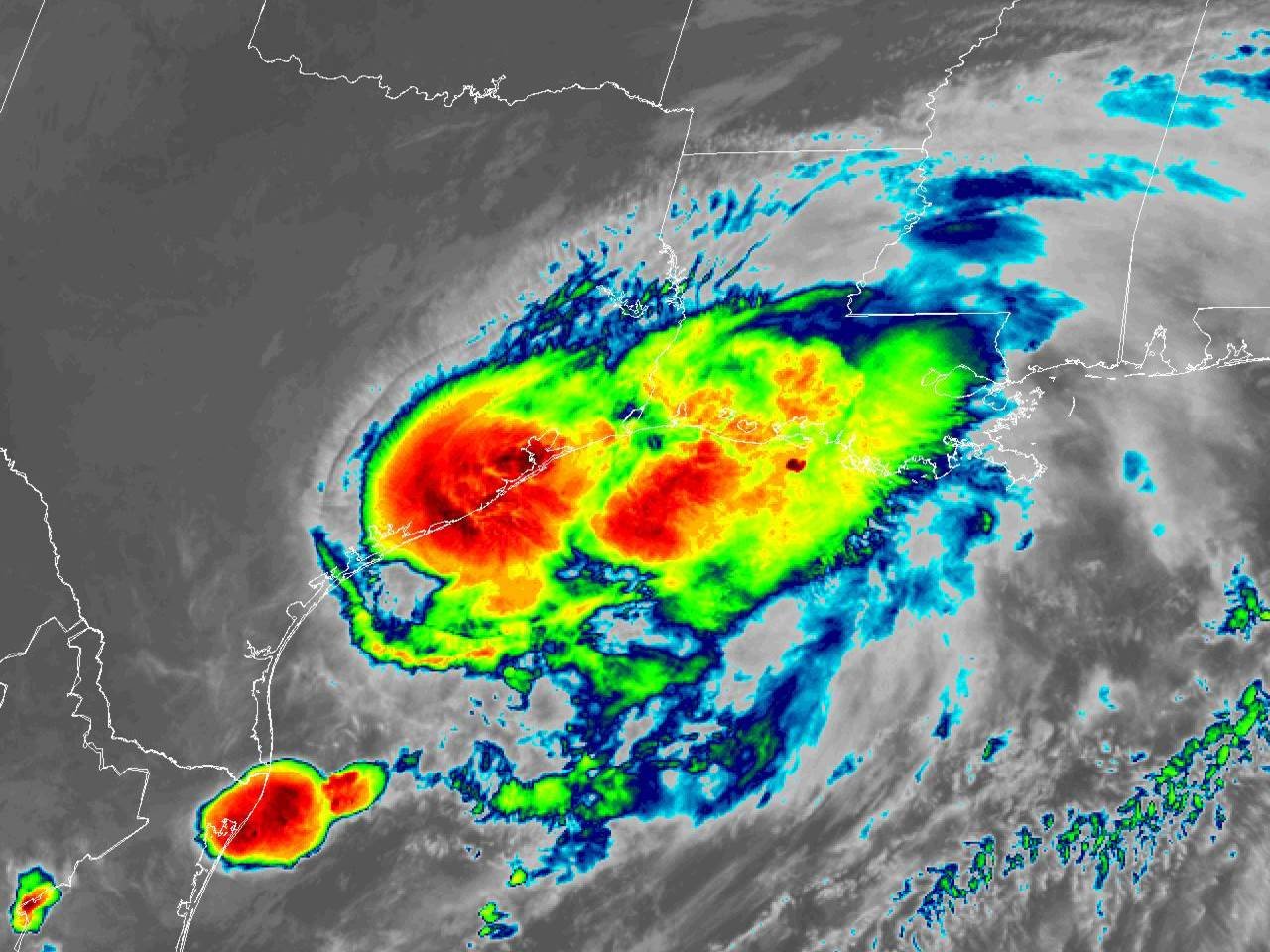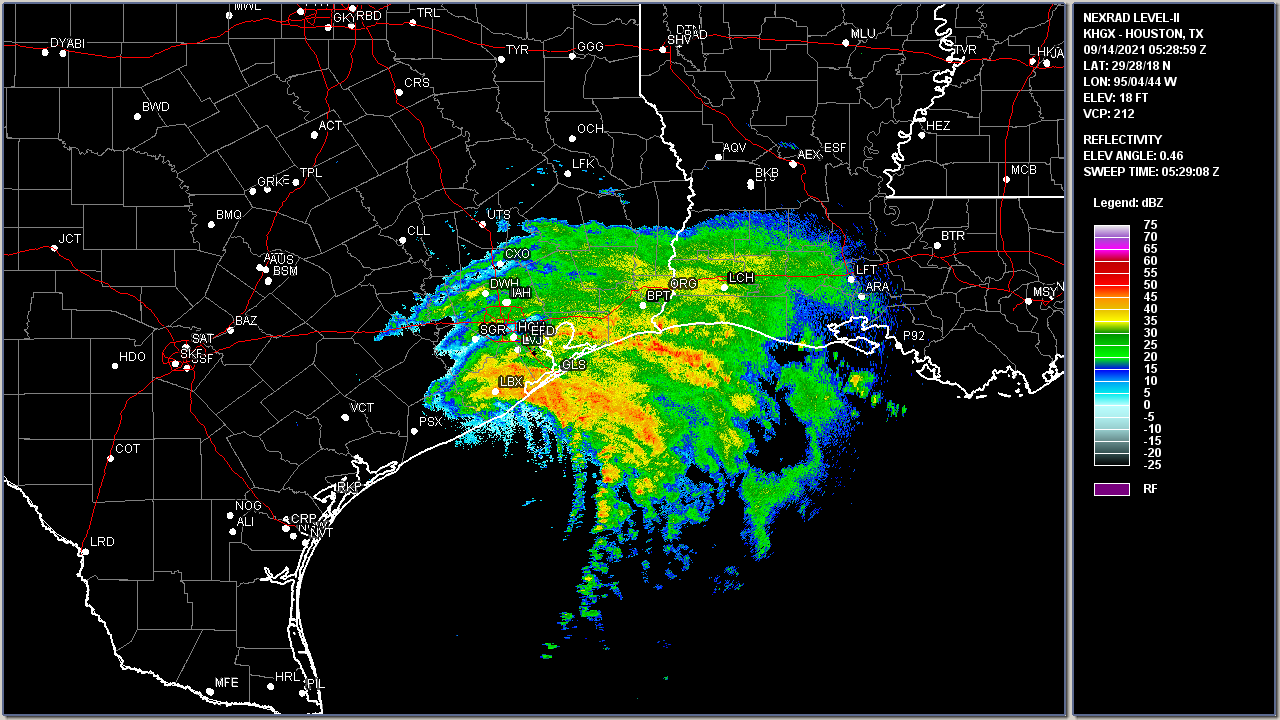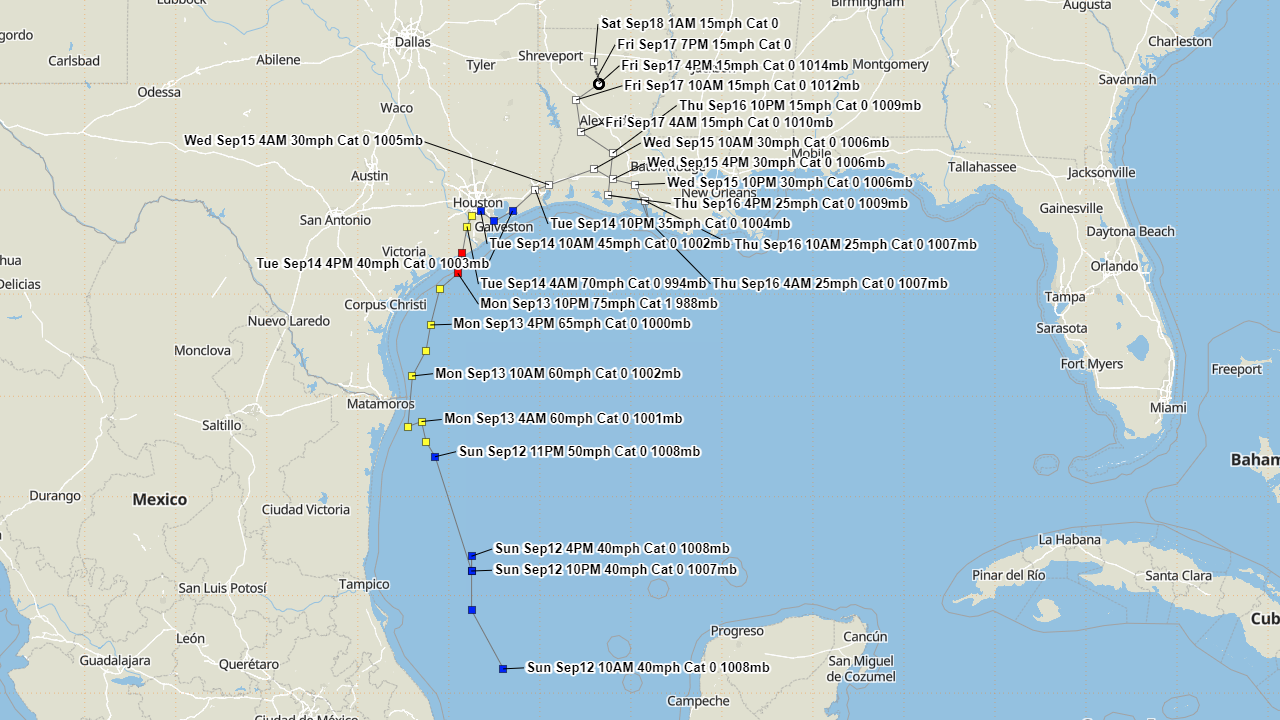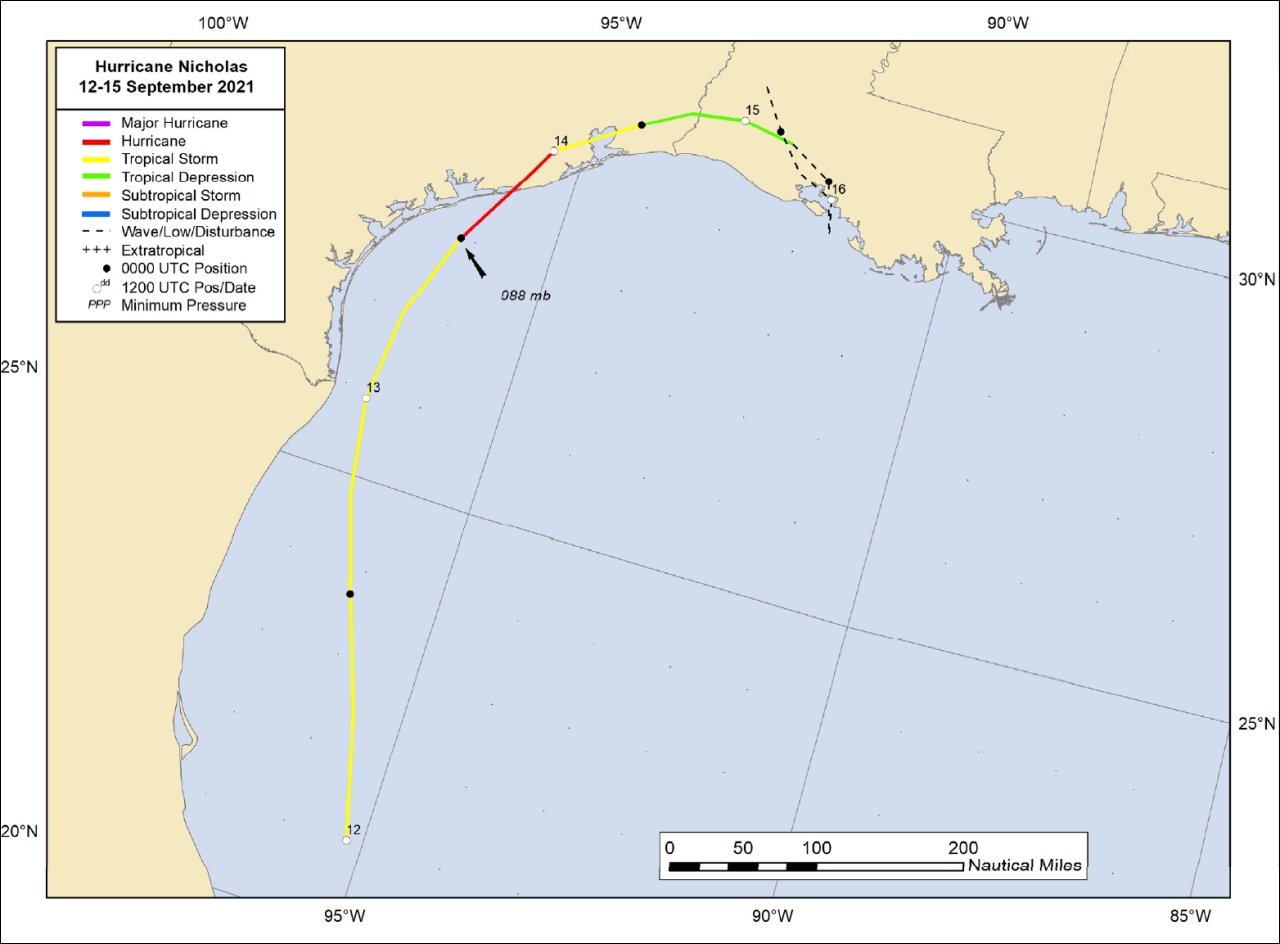|

Above: GOES 16 Infrared Satellite Image of Hurricane Nicholas at 12:31 AM CDT on September 14, 2021.
On September 9th, the National Hurricane Center began monitoring a tropical wave over the western Caribbean Sea for potential development. By September 12th, the system became better organized over the Bay of Campeche. Air Force reconnaissance aircraft investigated the system after daybreak, and found minimal tropical storm force winds, thus being upgraded to Tropical Storm Nicholas at 10 A.M. CDT.
Nicholas had trouble remaining organized as it moved north-northwest towards the Texas coast due to persistent west to southwesterly wind shear. On the evening of September 12th, the center of Nicholas re-formed about 170 miles to the north-northwest of the previous center, confirmed by aircraft reconnaissance and Brownsville radar, placing it around 95 miles southeast of the Mouth of the Rio Grand River.
Despite the warm Gulf waters in the mid to upper 80s, continued wind shear kept Nicholas from rapid strengthening the rest of night through most of the day on September 13th. Later that evening, an intense burst of convection over Nicholas’s center was enough to bring the intensity up to 75 mph (65 knots) and a minimal central pressure of 988 millibars (29.18 inches) and was upgraded to a hurricane by 10 P.M. CDT.
Hurricane Nicholas made landfall at 75 mph (65 knots) and a minimal central pressure of 991 millibars (29.26 inches) near 12:30 A.M. September 14th on the eastern part of the Matagorda Peninsula, about 10 miles west-southwest of Sargent Beach, Texas. Nicholas moved further inland and weakened back to a tropical storm by 4 A.M. CDT. Nicholas continued weakening as it turned more east-northeast, traveling coastal Southeast Texas for the remainder of the day, weakening to a tropical depression by 10 P.M. CDT near Beaumont, Texas.
From September 15-16th, Tropical Depression Nicholas continued slowly eastward across Southern Louisiana, making an anticyclonic loop on the 16th. Nicholas was designated post tropical due to the lack of convection early on the 17th while it headed northward across Central Louisiana, dissipating later that evening across North Louisiana.
WINDS & PRESSURE:
The strongest winds with Nicholas occurred across Jefferson County in Southeast Texas and the adjacent coastal waters. Along the coast, the Sabine Pass, TX NOS site recorded maximum sustained winds of 47 mph (41 knots) with a peak gust of 62 mph (54 knots) around 4 AM CDT on September 14th. Further inland at the Beaumont & Port Arthur Southeast Regional Airport, maximum sustained winds of 36 mph (31 knots) with a peak gust of 52 mph (45 knots) was recorded around 7:45 A.M. CDT on September 14th. Across Cameron Parish Louisiana, the Cameron, LA NOS site recorded maximum sustained winds of 43 mph (37 knots) with a peak gust of 49 mph (43 knots) around 10:18 A.M. CDT on September 14th. Further east along the coast and north into Calcasieu Parish, maximum gusts near 40-45 mph were recorded during the day.
STORM SURGE:
The highest storm surge values between 2.0 and 2.5 feet Mean Higher High Water (MHHW) were recorded along coastal Southeast Texas from High Island eastward to the Atchafalaya river September 14th into early on September 15th.
RAINFALL:
Due to the slow movement after landfall, rainfall of 4 to 8 inches were common across Southeast Texas and Southern Louisiana. Higher rainfall amounts of 8 to 14 inches were recorded across Rapides, Avoyelles, St. Landry and Evangeline parishes, most of this falling the evening and early morning hours September 14-15th. The highest storm total rainfall of 14.06” was recorded at the cooperative observing site of Bunkie, LA. Several roads were underwater across Rapides, Avoyelles, St. Landry and Evangeline parishes in Central Louisiana, as well as Jefferson and Orange counties in Southeast Texas.
For a complete summary of all the effects of Nicholas across our region, see the Post Tropical Cyclone Report issued by the National Weather Service Lake Charles, LA.

Above: Houston, TX WSR-88D radar image of Hurricane Nicholas at 0529 UTC (12:29 AM CDT) on September 14, 2021.

Above: Hurrevac track of Hurricane Nicholas from operational National Hurricane Center public advisories.

Above: National Hurricane Center best track of Hurricane Nicholas.
Listed below are post-storm reports and meteorological data gathered. All data is considered preliminary, and is subject to change at any time. Additional information will continue to be added to this page in the future.
Webpage design by: Donovan Landreneau
Content by: NWS Lake Charles staff, other sources as noted above.
|